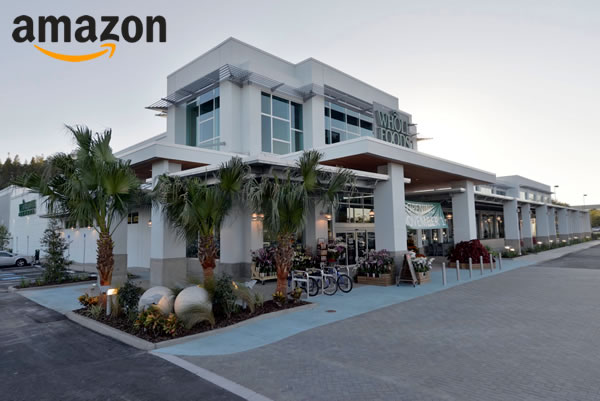
Pictured above: The Whole Foods in my neighborhood. Nice, isn’t it?
Whole Foods — its full name is Whole Foods Market, but more people call it “Whole Paycheck” because of their reputation for the premium prices they charge for items that you won’t easily find at your run-of-the-mill grocery store — will still operate under its own name, with its current CEO John Mackey, and out of their Austin, Texas headquarters.
What does Amazon get out of the deal? After conquering the market for online dry goods, they’ve set their eyes on the only kind of shopping that we do more often: groceries. They’ve been experimenting with grocery delivery service for years with AmazonFresh, which serves a few locations: the Seattle area, Los Angeles, San Francisco, San Diego, New York, Philadelphia, Baltimore, Sacramento, London, Boston, Dallas, and Chicago. Acquiring Whole Foods instantly gives them a well-known, well-liked brand and over 400 “showrooms” located on prime real estate that are frequented by customers with more than the average amount of disposable income. In the longer run, Whole Foods locations can serve as fulfillment centers, and distribution or pick-up points for online grocery orders.
What does Whole Foods get out of the deal? According to this Recode article, being acquired alleviates a number of business headaches, such as the “activist investors” that Whole Foods CEO John Mackey calls “greedy bastards”, as well as “slow growth, shrinking profits and increasing competition from traditional grocers, meal-kit services like Blue Apron,” and — oddly enough — “e-commerce plays like Amazon.”
My favorite Tweet about the acquisition so far:
I, too, spend $13.7 billion at Whole Foods.
— Slade Sohmer (@Slade) June 16, 2017